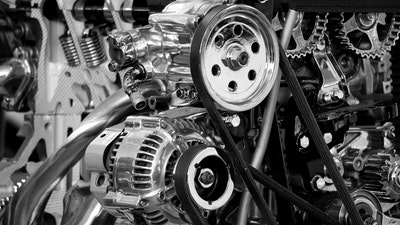How to Select the Right PDC Compressor for Your Hydrogen Project
When it comes to choosing a PDC (Pressure-Diaphragm Compressor) for a hydrogen project, the stakes are high.
Whether you’re working in fuel cell technology, hydrogen refueling, or industrial applications, a reliable PDC compressor is essential to ensure your operations run smoothly, efficiently, and safely. With so many options available, though, how do you pinpoint the best choice?
Let’s break down what to consider so that you can confidently select a compressor that aligns with your project’s unique demands.
1. Understand Your Specific Hydrogen Application Needs
Different hydrogen applications have different requirements, which will shape what you need from a compressor. For example, are you setting up a hydrogen refueling station or working in hydrogen production? Each type of project comes with its own operational pressures, flow rates, and safety requirements. Here’s a closer look:
- Hydrogen refueling – For hydrogen stations, you need a compressor that can handle high pressures and fast cycling to support vehicle refueling times.
- Fuel cell technology – Here, the focus is often on purity and steady flow rates since fuel cells are sensitive to contaminants and pressure fluctuations.
- Industrial processes – For large-scale applications like hydrogen production, a compressor must handle continuous operation with a strong emphasis on energy efficiency and durability.
Clarifying the primary purpose of your hydrogen application will set a solid foundation for selecting the right compressor with the necessary specifications and features.
2. Get to Grips with Flow Rate Requirements
Knowing your flow rate requirements will narrow down your options significantly when looking for a PDC compressor for hydrogen. Hydrogen projects often need high-volume compressors that can maintain a steady flow at high pressures without compromising on efficiency. But not all compressors are created equal here. Ask yourself: how much hydrogen does your project need to move per minute, hour, or day?
A hydrogen refueling station, for example, may need to achieve rapid fill rates for multiple vehicles back-to-back. On the other hand, a smaller-scale fuel cell application may require a slower, steadier flow. Matching your compressor to your flow rate requirements is essential for efficiency and to avoid underperformance that could hinder your project.
3. Pressure Ratings: Get the Right Fit
For hydrogen projects, pressure is everything. PDC compressors are designed to handle extreme pressures, but not every compressor will suit every application. The pressure you need largely depends on the type of system you’re running and how much compression is required to move hydrogen effectively through it.
Hydrogen refueling stations, for example, need compressors that can achieve high pressures, typically upwards of 700 bar. Lower-pressure applications, like certain industrial processes, may only require pressures around 150-300 bar. Take note of your system’s pressure demands and choose a compressor with a pressure rating that not only meets but comfortably exceeds this range to ensure reliability and safety.
4. Material Compatibility Matters
Hydrogen is a challenging gas to handle due to its small molecular structure and reactivity, which can lead to issues like hydrogen embrittlement – a phenomenon where materials become brittle and crack due to prolonged exposure to hydrogen. To avoid equipment failure and maintenance nightmares, it’s vital to select a compressor that uses materials designed for hydrogen’s unique properties.
Check that the compressor’s materials are specifically rated for hydrogen use. This typically includes stainless steel and other high-strength alloys. Avoiding incompatible materials ensures your system maintains its integrity over time and can operate continuously without frequent repairs.
5. Look at Efficiency and Operational Costs
Efficiency isn’t just a bonus—it’s essential in today’s environmentally conscious energy landscape, especially in projects centered around renewable hydrogen. An efficient compressor will not only help to reduce energy costs but also lower emissions, contributing positively to the overall sustainability of your project.
Assess the energy consumption of each compressor model you’re considering. Some models are engineered with energy-saving features that can make a notable difference over time. While these might come at a higher upfront cost, the savings on operational expenses often offset this investment, particularly for long-term or high-volume projects.
6. Consider Maintenance and Ease of Operation
Maintenance requirements can vary considerably between compressor models. Some compressors come with user-friendly designs and modular parts, which make regular maintenance tasks simpler. Others may have complex systems that require more specialized skills, adding to maintenance time and costs.
Also, consider how easy the compressor is to operate daily. Systems with straightforward controls, intuitive diagnostics, and clear maintenance schedules are generally better suited for fast-paced environments like refueling stations.
In contrast, a highly complex system may be better suited for controlled industrial settings where there’s always an experienced technician on hand.
7. Evaluate Safety Features
Hydrogen is highly flammable, which means safety is a top priority in any hydrogen application. The right compressor should include built-in safety mechanisms such as pressure relief valves, automatic shutdowns, and leak detection systems. Additionally, the compressor should have certifications that meet international safety standards for hydrogen use, like ATEX or ISO.
It’s worth exploring which safety features are essential versus optional, depending on your setup. While all compressors should have a strong baseline of safety measures, your particular project may benefit from advanced systems, especially if you’re working in high-risk environments.
8. Don’t Forget About Future Expansion
Planning for scalability can save you from having to replace or heavily upgrade your compressor down the line. Ask yourself, is your hydrogen project likely to expand in the coming years? If so, consider choosing a compressor that can be adapted to handle larger volumes, higher pressures, or increased demand without major overhauls.
For instance, if you’re setting up a hydrogen refueling station, think about future vehicle traffic increases. Investing in a scalable compressor now can mean smoother growth for your project later.
Making the Right Choice for Your Hydrogen Project
Selecting a PDC compressor isn’t just about getting the job done—it’s about finding the right tool to optimize efficiency, safety, and reliability.
By focusing on factors like application needs, pressure ratings, material compatibility, efficiency, and future expansion, you can make an informed choice that keeps your hydrogen project on track and aligned with your operational goals.







